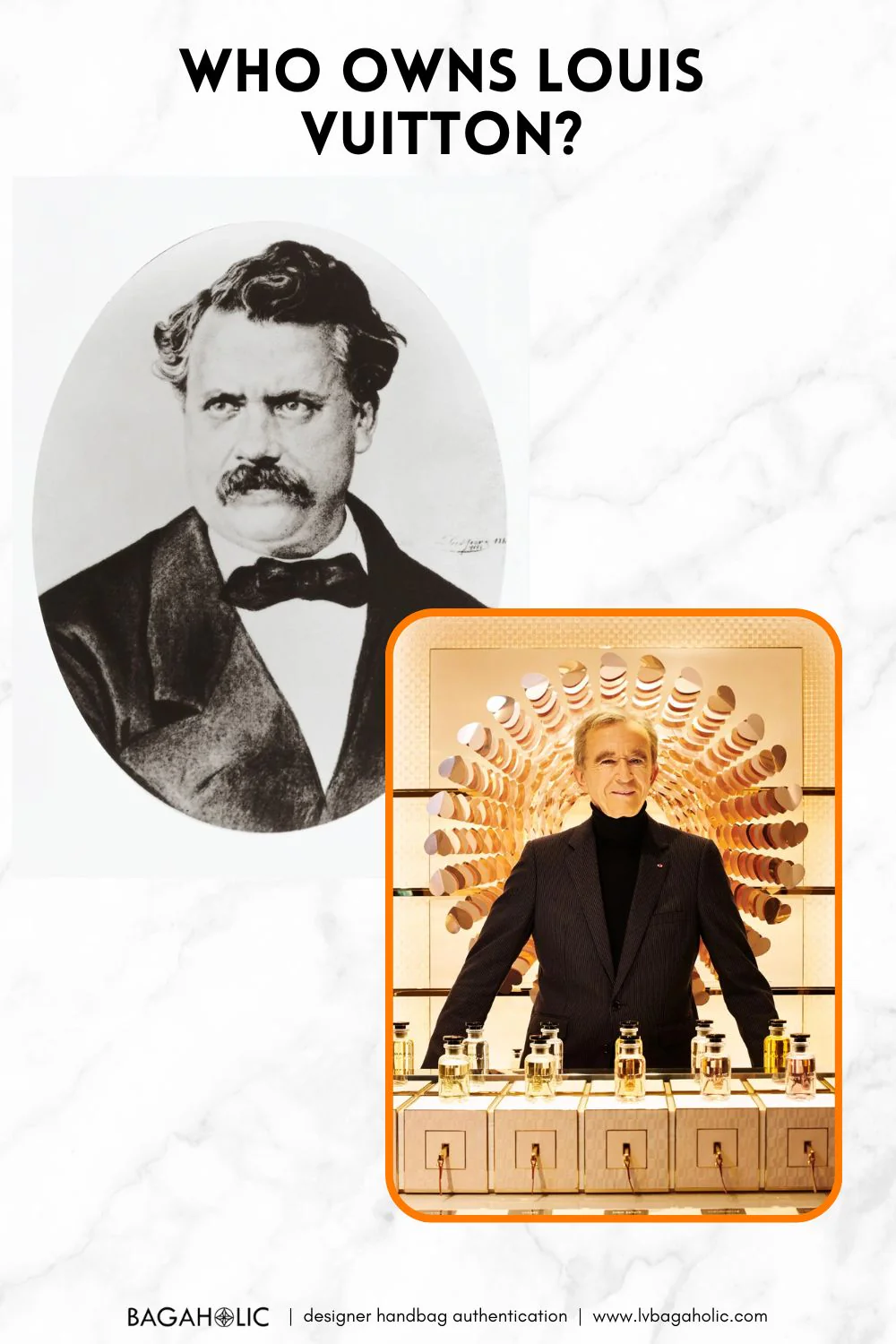
Louis Vuitton—a brand that practically screams luxury, style, and top-notch quality. Ever caught yourself pondering who's behind this legendary label? Well, let's take a little stroll down memory lane and trace back the ownership of the company to reveal the giant that holds the keys to the kingdom: LVMH.
Louis Vuitton's Original Owner
The story of Louis Vuitton began in 1854 in Paris, France, founded by the man himself, Louis Vuitton. The company first opened its doors as a workshop crafting custom travel goods and luggage. But who controlled the reins of this luxury giant through the ages?
1854-1892

After honing his skills for 17 years at Monsieur Maréchal’s workshop, Louis Vuitton was ready to spread his wings. He said goodbye to his mentor, tied the knot, and planted the seeds of his dream right in the bustling center of Paris. Opening his very first box-making and packing boutique on Neuve-des-Capucines street in 1854, little did he know, he was laying the foundation of what would become a global empire.

Louis Vuitton was then the only craftsman and the sole proprietor, starting the brand with his own name and setting the foundation for a global empire.
In 1858, Louis Vuitton revolutionized luggage by inventing a flat trunk, a novel design that was more practical for storage and transport than the rounded-top trunks of the time. He quickly became the go-to luggage supplier for European elite and royalty, including the Spanish king and the future Russian Tsar. By the way, one year before opening his own shop, a 32-year old craftsman was appointed by the most influential figure of the entire country – Empress Eugénie de Montijo – as her personal packer.

1892-1936
In the late 1800s and early 1900s, many travelers carried their belongings in trunks, and Louis Vuitton was famous for making these. But, these trunks had a simple lock that thieves could easily open, knowing that they often belonged to rich people and might contain valuable items. To solve this problem, Georges and his father Louis decided in 1886 to invent a new, more secure lock.
After Louis's passing in 1892, the control passed to his son, Georges Vuitton, who expanded the brand's luxury offerings and global reach. He was the one who introduced the monogram pattern, which is iconic today. Interlocking letters “L” and “V”, which symbolize the initials of the founder, haven’t been changed since 1896.
Georges became the leader of the high-end trunk and bag company and was the first Vuitton to take the brand international by presenting it at the Chicago World Fair in 1893.
1936-1970
After Georges Vuitton's death in 1936, his son Gaston Louis Vuitton (1883–1970) succeeded him as head of the Vuitton brand.
He was the head of the brand until his own death in 1970 ending the three-generation lead of the Louis Vuitton brand by Vuitton men.
1971-1987
In the late 20th century, Louis Vuitton merged with Moët Hennessy in 1987 following a series of strategic business maneuvers, creating LVMH, a conglomerate aiming to preserve the heritage and prestige of leading luxury brands.
1987-Present
Since the creation of LVMH Moët Hennessy Louis Vuitton SE, Louis Vuitton has been under the umbrella of this luxury goods powerhouse.
What is LVMH?
LVMH Moët Hennessy Louis Vuitton, the world's leading luxury products group, was officially formed in 1987. This conglomerate was born through the merger of the prestigious champagne and cognac producer Moët Hennessy and the iconic fashion house Louis Vuitton.
With its headquarters in Paris, France, LVMH has been acquiring luxury brands to add to its portfolio, including watches, jewelry, cosmetics, and wines.
in 2024, LVMH stands tall with an impressive portfolio of over 70 luxurious brands. They are not just about selling products; they're selling an experience, a legacy of craftsmanship, and an unwavering commitment to quality.
The conglomerate's reach is global, impacting various facets of the luxury market. It's not just about owning brands; it's about maintaining the essence and iconic stature of each name under its wing.
The Captain Steering the LVMH Ship: Bernard Arnault

Picture credit: Forbes
At the helm of LVMH is Bernard Arnault, a name that's become synonymous with luxury and business acumen. Born on March 5, 1949, in Roubaix, France, Arnault transformed the landscape of the luxury goods sector.
With an engineering degree and an early start in his family's construction business, Arnault's venture into luxury goods was strategic and visionary. His initial takeover of Boussac Saint-Frères, a textile company that owned Dior, marked his entry into the luxury world.
Through a series of acquisitions, Arnault expanded LVMH's portfolio, including notables like Bulgari, Tag Heuer, and Sephora. His strategy? Ensuring each brand's autonomy while nurturing their growth and innovative potential.
Known for his meticulous attention to detail and a keen eye for talent, Arnault's leadership has propelled LVMH to unparalleled heights. In April 2023, LVMH became the first European company to surpass a valuation of $500 billion. In 2023, the company was ranked 47th in the Forbes Global 2000.
In Conclusion
The legacy of Louis Vuitton, from its humble beginnings to its status as a cornerstone of luxury fashion, is a remarkable tale. With LVMH at the reins, led by the visionary Bernard Arnault, the brand is set to continue its story of success, elegance, and innovation. For enthusiasts, observers, and customers alike, the evolution of this luxury behemoth remains a captivating narrative, emblematic of the enduring allure of fine craftsmanship and the timeless pursuit of excellence.







